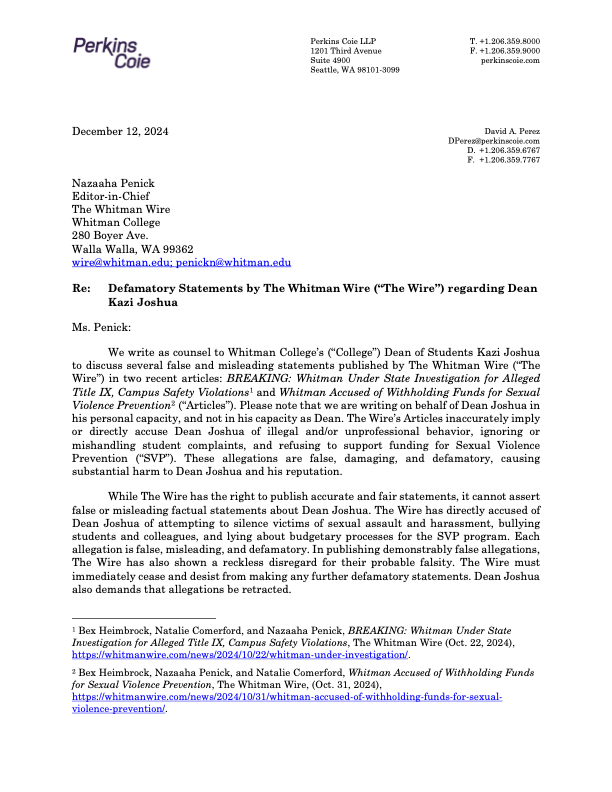The Whitman Fencing Club has nearly doubled in size in the past month after an unprecedented 10 new first-years began regularly attending practices. To equip the new recruits, the Fencing Club received emergency funds from the ASWC contingency fund.
Though one of the oldest student activities on campus, with various incarnations existing as far back as the 1940s, in recent years the Fencing Club has had fewer than 20 members who regularly attend practices. Of the 27 regular members who showed up for practice in January, 15 are first-years, and 10 joined at the beginning of the spring semester.
“Usually at the beginning of the year we get 20 to 25 people that show up, and anywhere from two to five stick around. Spring semester we may get one or two more people,” said senior Morgan Dienst, who serves as the captain and lead instructor of the Fencing Club. “This year it’s unprecedented, we’ve got 10 [recruits since January] and they’ve kept coming, so we’re hopeful that many of them will stick around.”
ASWC approved a request from the fencing team for 750 dollars of contingency funds to buy new safety gear and swords, known as foils. For the first several practices, new members had to rely on older equipment normally kept in storage.
“The equipment that we had was pretty old. The swords were more prone to breaking, the equipment armor wasn’t as safe as it could be,” said first-year Grace Pyles, who joined the Fencing Club in the fall.
The Fencing Club was formed eight years ago, replacing the Fencing Team. As a club, the organization focuses on helping members improve their technique and explore different types of armed combat.
“Everybody comes and we learn, but it’s not really competition-focused. I think that’s helped our club because people aren’t worrying about their ranking within the club or worrying about going to a tournament and presenting well. They’re more interested in having fun and learning skills,” said Fencing Club President senior Kate Seiberlich.
The Fencing Club practices the Italian style of fencing. However, more advanced members experiment with a variety of weapons, including the Spanish saber, daggers, longswords and quarterstaffs.
The Italian style of fencing is very different from sport fencing, the style seen in Olympic competitions. In sport fencing, the sole goal is to hit one’s opponent first; matches are often decided by fractions of seconds, as both competitors strike simultaneously. The Italian style of fencing prioritizes self defense.
“In classical Italian, because it’s coming out of more of a dueling tradition, you didn’t want to get stabbed. Because if you’re stabbed you’re bleeding, it’s painful, it could get infected. So you really want to defend yourself first,” said Dienst.
New members joining the fencing club begin to work their way through five ranks of instruction. To achieve each rank, fencers must pass an exam that includes theory, demonstration of technique and sparring with an instructor.
When they reach higher ranks, students begin instructing new members themselves. Lessons and practices are organized by the fifth-rank students, who refer to “The Science of Fencing” written by William Gaugler, an Italian fencing maestro, for guidance. This book is referred to by club members as their “fencing bible.”
“These are some of my best friends at Whitman, and it’s a really great place for people who are interested in this sort of thing to get together and stab people with shiny objects,” said Dienst.





